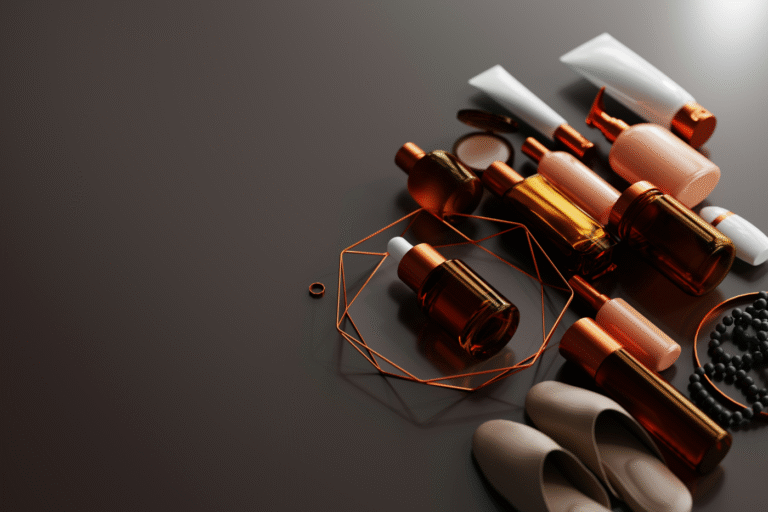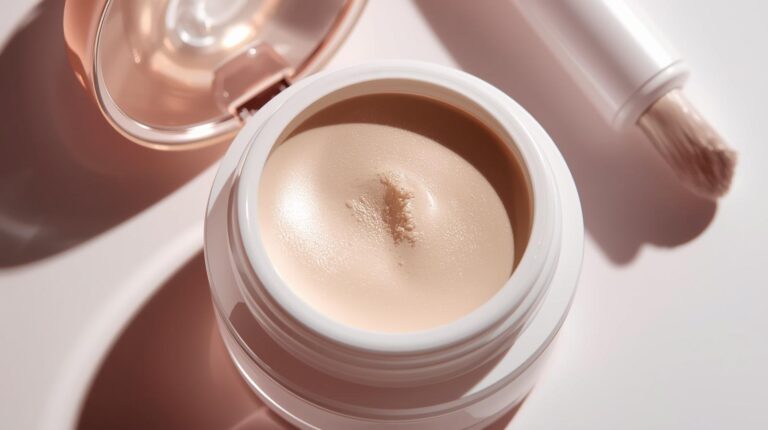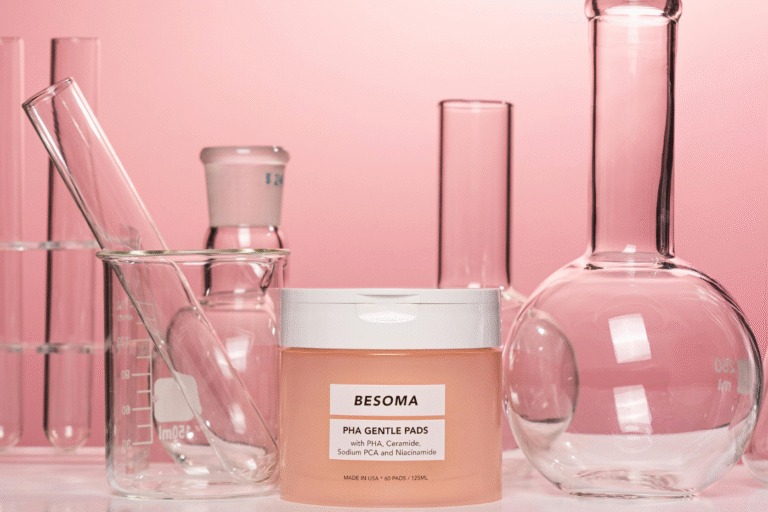
Blue Light Skincare: Save Your Skin Before It’s Too Late
The Problem
Most of us start the day reaching for our phones, scroll through emails on our laptops, and unwind in the evening with a tablet or television. While we are often cautious about sun exposure, the digital light emitted from these devices—known as blue light—is largely overlooked. Unlike UV rays, blue light penetrates the deeper layers of the skin and can disrupt collagen, elastin, gradually affecting the skin’s protective barrier. For those spending significant hours in front of screens, incorporating blue light skincare is becoming not just beneficial but essential.
Continuous exposure to blue light doesn’t always show immediate signs. Instead, it creates subtle oxidative stress that, over months and years, contributes to fine lines, dullness, and uneven pigmentation. Experts note that even younger skin is vulnerable to these effects, and for individuals with darker skin tones, hyperpigmentation may appear more prominently. Understanding these invisible stressors allows us to take proactive steps in preserving skin health before visible damage sets in.
1. Impact of Blue Light
Blue light exists in the visible light spectrum between 400–500 nanometers. It is emitted not only by screens but also by the sun, although the exposure from daily digital devices is more constant. When blue light penetrates the skin, it triggers free radicals that can damage cells, weaken the skin barrier, and speed up visible aging. Over time, this can manifest as fine lines, wrinkles, and a loss of skin elasticity.
Beyond cosmetic concerns, blue light can also inflame the skin. People with sensitive skin or conditions like rosacea may notice increased redness or irritation with prolonged device use. Even in healthy skin, constant exposure contributes to subtle dullness, making the skin appear tired despite proper hydration. Blue light skincare routines are designed to combat these effects, maintaining resilience and overall skin tone.
2. Why Blue Light Skincare Matters
Traditional skincare often emphasizes sun protection, which is essential, but indoor exposure from laptops, smartphones, and tablets introduces an additional group of risks. Standard sunscreens do little to counter oxidative stress from digital light. Blue light skincare products incorporate antioxidants and barrier-strengthening ingredients that neutralize free radicals, reduce inflammation, and repair skin damage from daily exposure.
Regular use of these products supports skin health in multiple ways. Fine lines are minimized, tone and texture improve, and the skin retains its natural brightness. Over time, these measures help prevent cumulative damage, giving the skin a stronger barrier against other environmental factors like air pollution and seasonal variations.
3. Key Ingredients to Look For
When choosing blue light skincare, it is important to focus on ingredients backed by research. Niacinamide strengthens the skin barrier, improves moisture retention, and reduces visible redness. Vitamin C works as a powerful antioxidant that neutralizes free radicals, supports collagen production, and promotes a brighter, more even complexion.
Other key ingredients include green tea extract, which calms inflammation, and astaxanthin, a naturally derived algae ingredient that combats cellular oxidative stress. Mineral-based filters like zinc oxide and titanium dioxide can add an extra layer of defense against digital exposure, complementing antioxidant-rich formulations for comprehensive protection.
4. Crafting an Effective Routine
Building a routine that incorporates blue light protection is simpler than it seems. Begin with a gentle cleanser to remove impurities and prepare skin for active ingredients. Some cleansers even contain antioxidants, adding an additional layer of protection against daily screen-induced free radicals. After cleansing, apply a serum containing Vitamin C or green tea extract to strengthen the skin’s defenses.
Next, use a moisturizer that reinforces the skin barrier, ideally with niacinamide or ceramides. Morning application of a dedicated blue light cream ensures protection throughout the day. Evening routines should focus on repairing any accumulated damage using serums rich in peptides or astaxanthin, which support natural cellular regeneration and combat oxidative stress.
5. Screen-Time Skincare
Skincare products alone are not enough to counter the effects of constant screen exposure. Limiting unnecessary device usage, particularly in the evening, helps reduce cumulative stress on the skin. Blue light filters or screen protectors on devices can further minimize exposure. Incorporating these simple habits enhances the protective effects of your skincare routine.
Taking frequent breaks from screen time is crucial. Following the 20-20-20 rule—looking at something 20 feet away every 20 minutes—reduces eye strain and skin stress. Additionally, consuming antioxidant-rich foods like berries, leafy greens, and nuts provides internal support, complementing topical blue light skincare steps to preserve skin health over time. Combining lifestyle adjustments with targeted skincare ensures your skin stays radiant and resilient over time.
6. Debunking Common Myths
A prevalent misconception is that only sunlight causes damage. While sunlight does emit higher-intensity blue light, chronic exposure from digital devices can gradually lead to oxidative stress, skin irritation and initial signs of aging. Another common myth is that any moisturizer offers protection, only formulations specifically designed with antioxidants or blue light protective ingredients can effectively combat these effects. Understanding the difference helps you choose products that truly shield your skin.
Some people believe that young skin is immune. In reality, oxidative stress can affect all skin types and ages, causing subtle dullness, early fine lines, or pigmentation changes. Awareness of these myths ensures informed choices for anyone seeking preventative blue light skincare routines. Taking proactive measures early can make a significant difference in long-term skin health.
7. Choosing the Right Products
Selecting the right blue light protective products involves evaluating ingredients, texture, and formulation. Verified antioxidants like niacinamide, Vitamin C, and green tea extract are essential for neutralizing free radicals. Lightweight, non-comedogenic products are ideal for layering under makeup or sunscreen, and using halal sunscreens and CC creams can further enhance protection. Choosing products that suit your skin type ensures maximum protection and visible results.
Multi-functional formulas that combine hydration, repair, and protection are practical for a busy, screen-focused lifestyle. Clinically tested, dermatologist-approved products give confidence in efficacy and safety, helping maintain skin health and radiance over time. Choosing products that suit your skin type ensures maximum protection and visible results.
Conclusion
The modern digital lifestyle introduces subtle but significant risks to skin health. Blue light skincare is a crucial tool in preventing premature aging, reducing irritation, and maintaining a bright, even complexion. By combining antioxidant-rich serums, barrier-strengthening moisturizers, and protective creams with thoughtful lifestyle choices, skin can remain healthy and resilient.
Investing in blue light skincare today ensures that skin remains strong, radiant, and youthful, allowing individuals to enjoy technology without compromising long-term skin health. Starting early helps prevent damage before it becomes visible, keeping your skin resilient for years to come.





